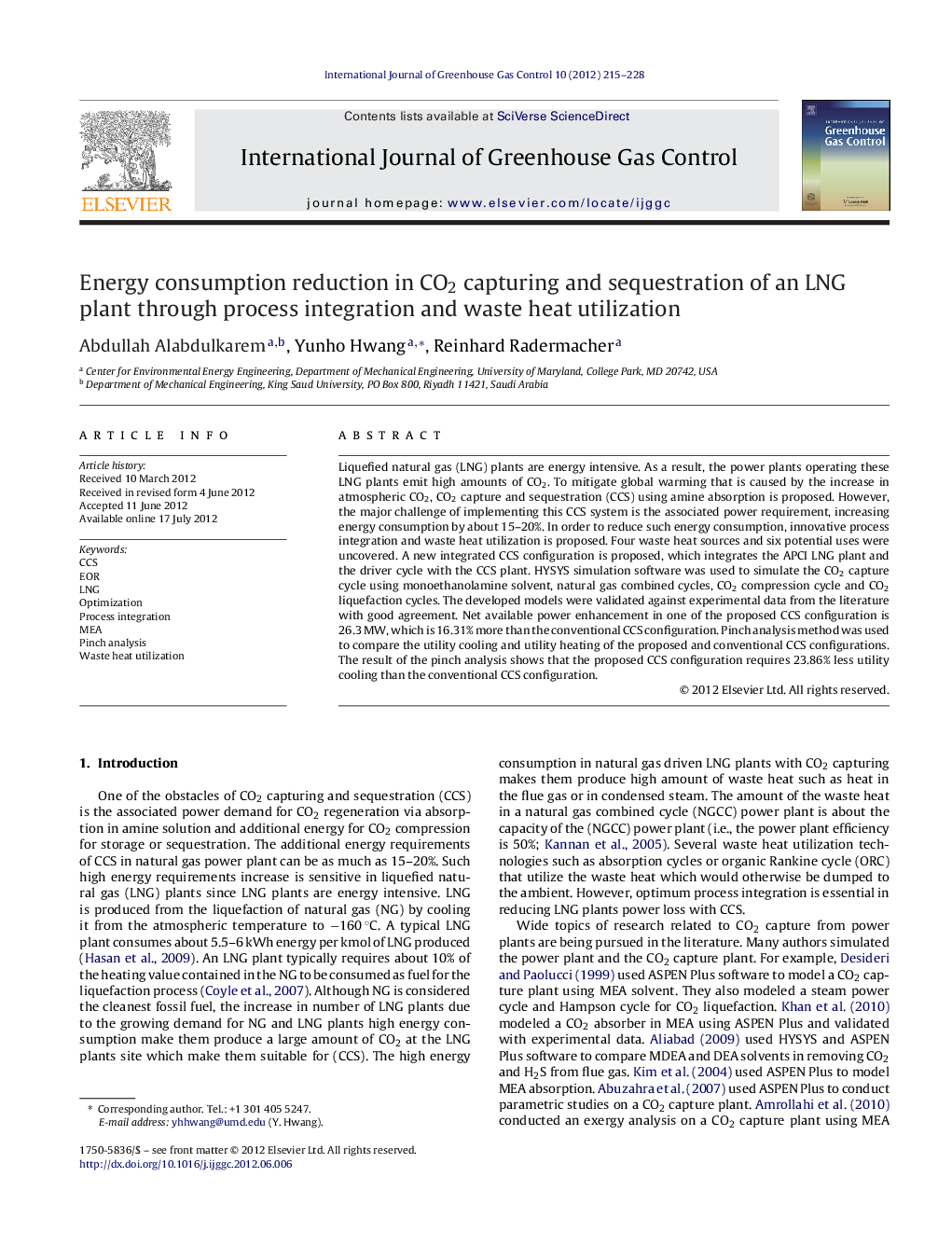| کد مقاله | کد نشریه | سال انتشار | مقاله انگلیسی | نسخه تمام متن |
|---|---|---|---|---|
| 1743302 | 1522013 | 2012 | 14 صفحه PDF | دانلود رایگان |

Liquefied natural gas (LNG) plants are energy intensive. As a result, the power plants operating these LNG plants emit high amounts of CO2. To mitigate global warming that is caused by the increase in atmospheric CO2, CO2 capture and sequestration (CCS) using amine absorption is proposed. However, the major challenge of implementing this CCS system is the associated power requirement, increasing energy consumption by about 15–20%. In order to reduce such energy consumption, innovative process integration and waste heat utilization is proposed. Four waste heat sources and six potential uses were uncovered. A new integrated CCS configuration is proposed, which integrates the APCI LNG plant and the driver cycle with the CCS plant. HYSYS simulation software was used to simulate the CO2 capture cycle using monoethanolamine solvent, natural gas combined cycles, CO2 compression cycle and CO2 liquefaction cycles. The developed models were validated against experimental data from the literature with good agreement. Net available power enhancement in one of the proposed CCS configuration is 26.3 MW, which is 16.31% more than the conventional CCS configuration. Pinch analysis method was used to compare the utility cooling and utility heating of the proposed and conventional CCS configurations. The result of the pinch analysis shows that the proposed CCS configuration requires 23.86% less utility cooling than the conventional CCS configuration.
► CCS energy demand is reduced by process integration and waste heat utilization.
► Net available power enhancement is 16.31% more than the conventional CCS.
► Pinch analysis method was used to compare the utility cooling and heating.
► Several steam cycles were developed and optimized.
Journal: International Journal of Greenhouse Gas Control - Volume 10, September 2012, Pages 215–228